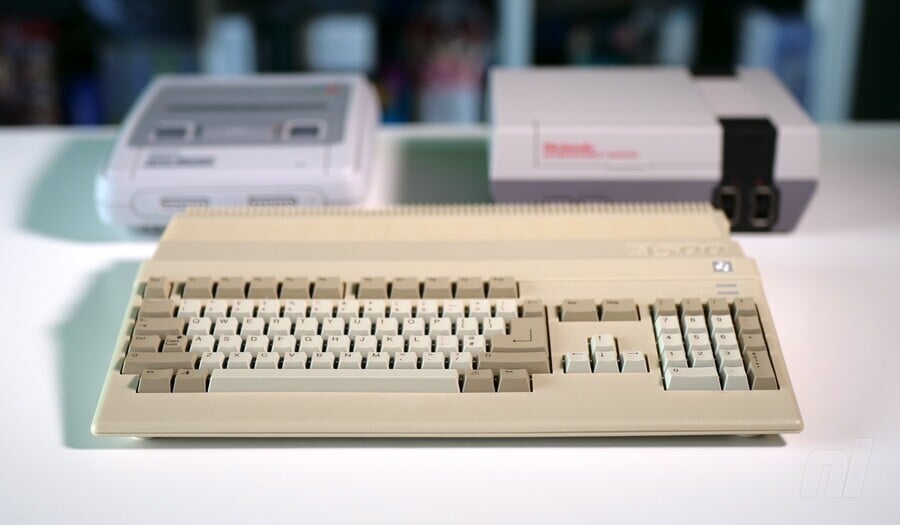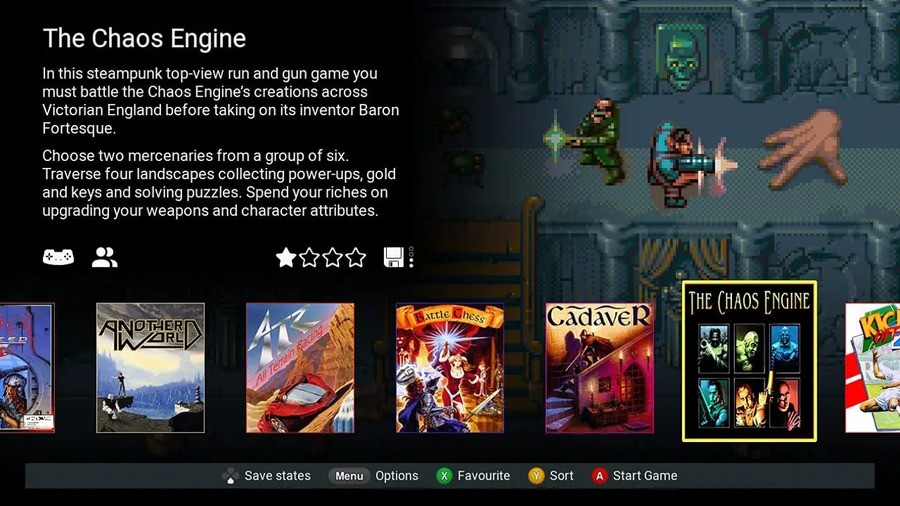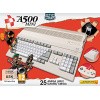Review: A500 Mini – A Refreshing Alternative To The NES And SNES Classic Editions
[ad_1]

When you’re discussing video game history, it’s often the case that memories will be dominated by consoles like the NES, SNES, Mega Drive / Genesis, N64, GameCube and so on – but those old enough to have lived through the ’80s will remember that for a period of time, home computers like the C64, Atari ST, ZX Spectrum and Commodore Amiga were a perfectly legitimate way of playing games outside of the arcade.
It’s fitting, then, that alongside the recent explosion of interest in plug-and-play ‘micro consoles’ like the NES Classic and Sega Mega Drive Mini we’ve seen some fresh takes on the humble home micro; UK firm Retro Games Ltd. has already produced a miniature version of the C64, and how it’s back with a pint-sized facsimile of the Amiga – a platform which, in Europe, at least, was insanely popular during the late ’80s and early ’90s.
Like the aforementioned NES Classic Edition, the A500 Mini (due to the complex legal issues surrounding ownership of the Commodore brand, that name isn’t present anywhere on the unit or the packaging) uses modern off-the-shelf components and software emulation to recreate the vintage platform. The device is many times smaller than the real deal, with some compromises; that miniature keyboard is purely for show and doesn’t actually work, for example. However, it does offer some creature comforts that the original system cannot match in its unmodified form; there’s HDMI-out and support for USB devices (so you can use a USB keyboard if you so wish, but the on-screen, pop-in keyboard works just fine). All in all, the A500 Mini is easily on par with the SNES Classic and PC Engine Mini when it comes to pure product design; even the red and green LEDs light up to denote power-on and drive access, just like the real thing.
The A500 Mini comes bundled with a joypad and mouse, the two primary forms of input when it comes to Amiga software. The controller is based on the one that shipped with the ill-fated Amiga CD32 – a noble and authentic choice, given the lineage of the system, but not one we’d say was particularly wise. The controller, while slightly better than the CD32 original, is still pretty poor, with the D-Pad proving to be especially problematic, especially when you’re aiming for diagonal input. There doesn’t seem to be any way of using third-party USB controllers (the PS Classic pad caused the UI to glitch out, while the Retro-Bit Sega 6-button USB controller wouldn’t register at all), but that may change with a future firmware update (the stick that ships with the C64 Mini does work, we’re told). For now, you’re lumbered with a pad that just about does the job, but it could be much better.
The mouse is more successful; it’s based on the original two-button ‘tank’ mouse that came with the Amiga but has been upgraded to feature optical technology rather than the trackball that was used in the original. It’s worth noting that this isn’t the most comfortable mouse in the world, but if you owned an Amiga back in the day, it will feel right. You can use any USB mouse if you prefer something different.
The A500 Mini ships with 25 games, many of which will certainly be on your average fan’s ‘must-have’ list. Speedball II, Zool, The Sentinel, Simon the Sorcerer, Stunt Car Racer, Another World, Super Cars II, Worms, Alien Breed, The Chaos Engine… these are truly classic titles, some of which were so popular back in the ’90s that they were subsequently ported to consoles like the SNES and Mega Drive. In fact, we’d argue that what’s included here is as solid a selection of games as you could possibly hope for, given that tracking down the IP holders for many of the Amiga’s best titles must be a pretty stern task these days.
The good news is that if your favourite game hasn’t made the cut for whatever reason, you can simply side-load it using a USB stick. The A500 Mini supports the ‘WHDLoad’ system which allows Amiga games to be packaged up in a single file (many games shipped on multiple floppy discs, you see) and loaded easily. This means you can fill a USB stick with all of your most beloved Amiga titles (including CD32 and CDTV releases) and run them on the A500 Mini with little issue.

The A500 Mini uses pretty much the same UI as the C64 Mini and supports elements such as save states (four per game) and a CRT screen filter – the latter of which is one of the best applications we’ve seen on one of these devices. Emulation is excellent (A1200 games are also supported, the latter of which benefit from the ‘Advanced Graphics Architecture’ of the platform), although one quirk of the Amiga being more popular in Europe than the United States is that most games were designed to run at the slower 50hz TV standard, rather than 60hz, which is what US televisions use.
Micro-consoles like the SNES Classic, Neo Geo Mini and even the Egret II Mini offer a very Japanese perspective on gaming, so it’s nice to see a western system get the same treatment – and it’s also interesting to see some of gaming’s most famous properties in their original form, prior to being ported to the Japanese consoles of the era. The Amiga might not be a “traditional” games console and its focus was never 100% on gaming, but its legacy is considerable – franchises such as Worms and Speedball found their commercial footing on the platform, and have endured until the present day.
As such, this is an intriguing device for anyone who is even remotely interested in tracking the development of the games industry – and while its £120 price tag makes it more expensive than many of its micro-console rivals, the ability to side-load games is very welcome indeed.
Please note that some external links on this page are affiliate links, which means if you click them and make a purchase we may receive a small percentage of the sale. Please read our FTC Disclosure for more information.
Thanks to Koch Media and Retro Games Ltd. for supplying the unit used in this review.
[ad_2]












